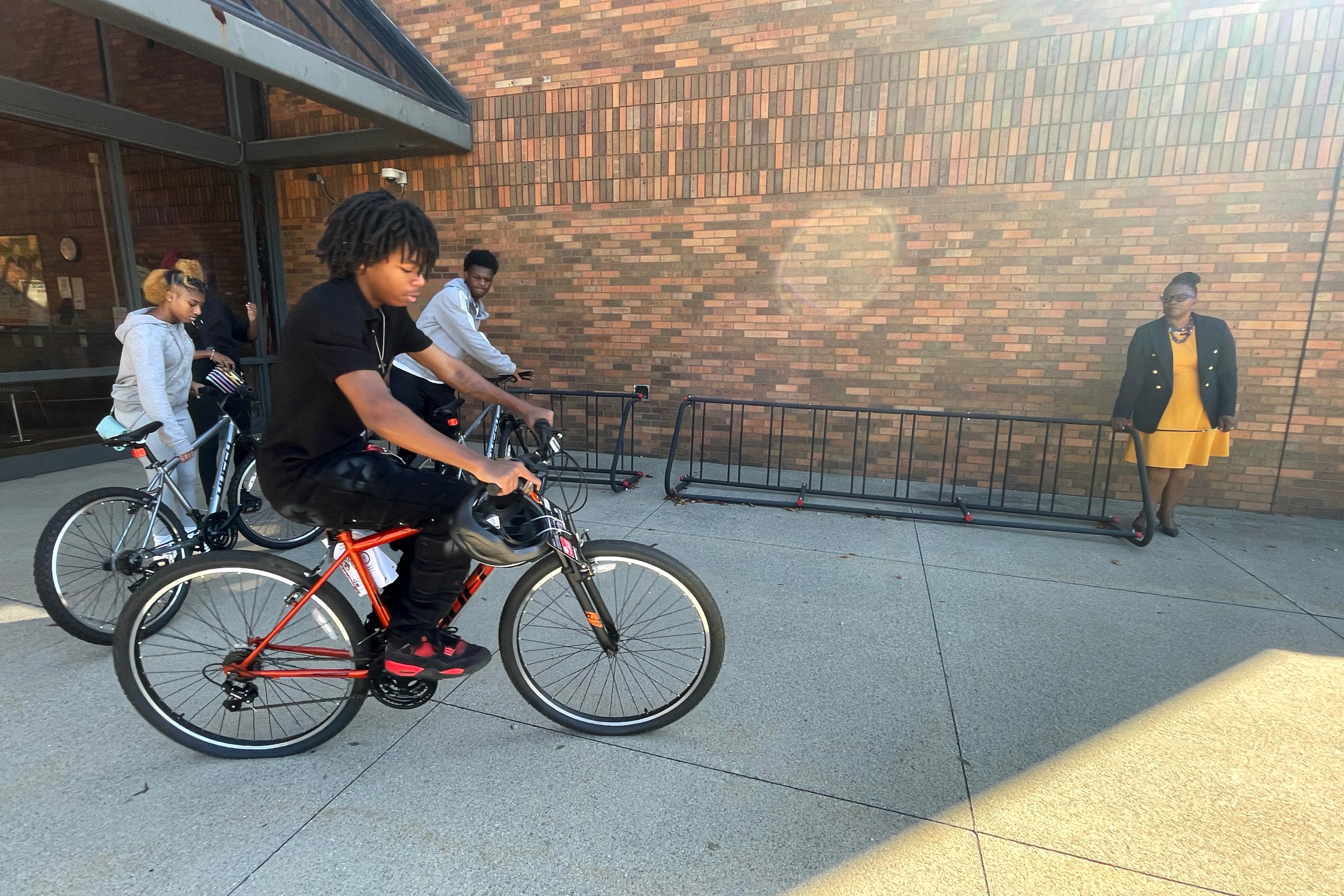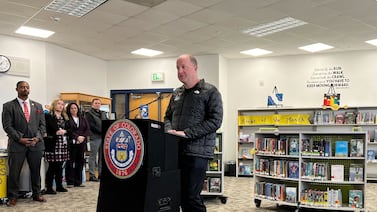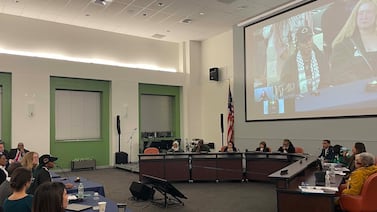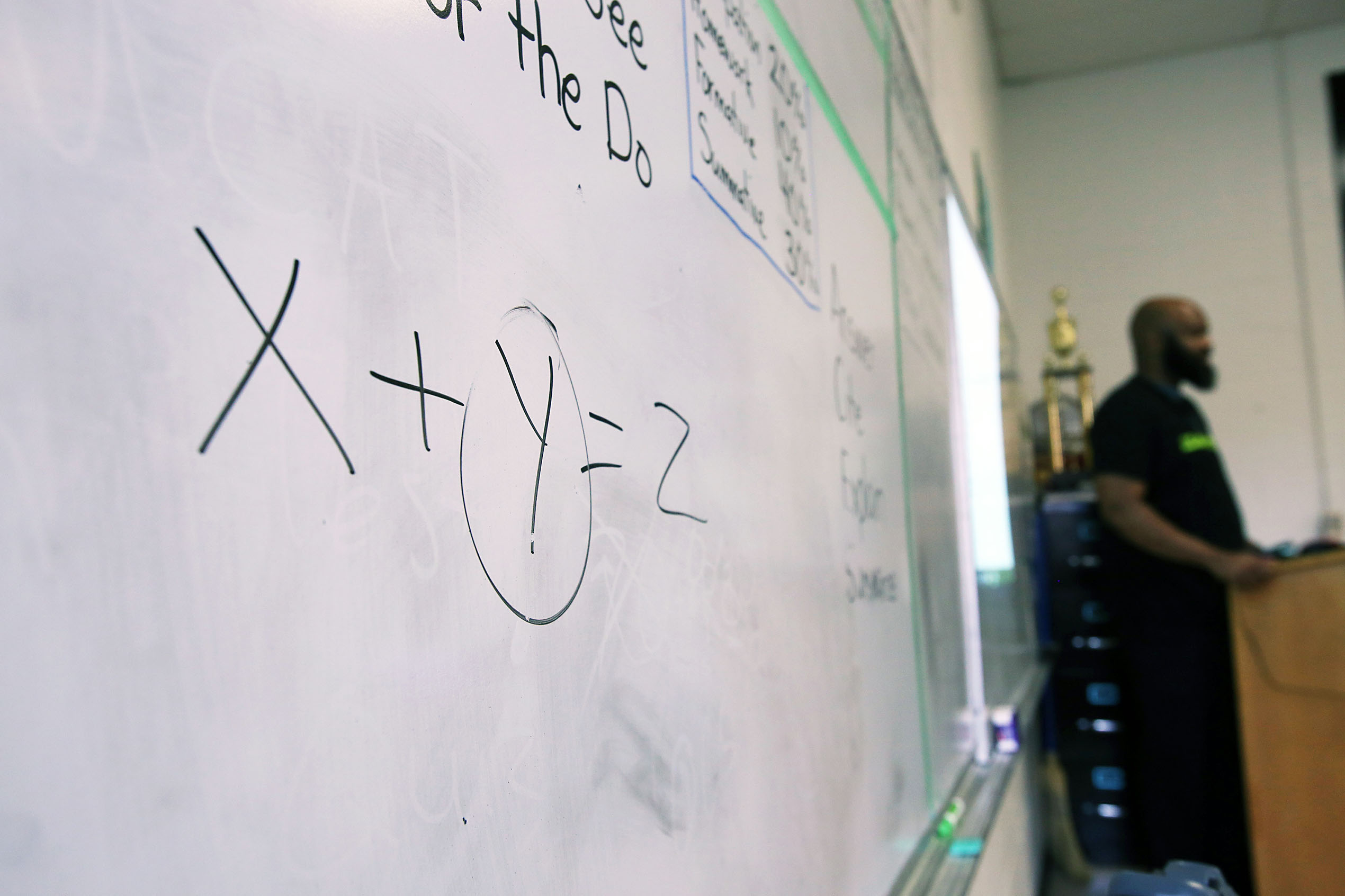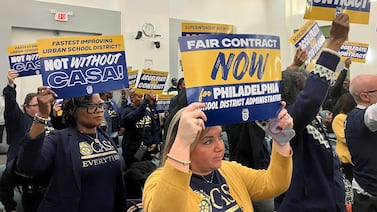Sign up for Chalkbeat Detroit’s free newsletter to keep up with the city’s public school system and Michigan education policy.
Some days, it takes Elyazar Holiday two hours and four buses to travel the 20 miles from his home on the far west side of Detroit to his school on the edge of the east side of the city.
The Detroit school district has limited yellow bus service, and none for most high school students. Like many students in the city, the 17-year-old’s family doesn’t have access to a working car. Riding city buses to Davis Aerospace Technical High School is Holiday’s only option, but – with delays and missed buses – it often proves unreliable.
Last year, Holiday received a gift from his school that made the trek easier: a bicycle.
Principal Michelle Davis gave every student at the school a bike as part of a holistic approach to reducing chronic absenteeism. The bikes were funded through community donations.
Many of the nearly 100 students at Davis Aerospace last year said the bicycles helped them safely get to school by reducing the amount of time they had to walk to school or wait for buses. Others said the bikes gave them a new sense of independence, allowing them to travel around the city with their friends, get to after-school activities or jobs, and get exercise.
While Davis believes the bicycles improved attendance during good weather in the fall and spring, she said it’s only one measure the school is taking to get kids to class.
“Giving the students bikes is just one problem that we’ve solved for,” Davis told Chalkbeat. “What we do intentionally is solve for all of the problems that the kids have, because that has to be our major responsibility.”
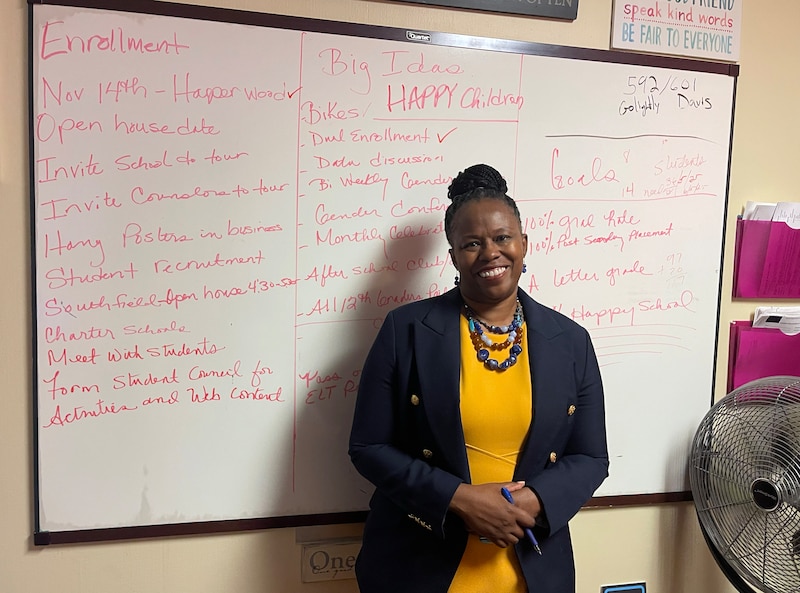
The principal wanted her students to feel the same sense of independence she did as a teen when her mother bought her a pink Huffy.
So, Davis wrote “bikes” at the top of a white board next to her desk that lists her “big ideas.” And soon the vision came to fruition.
Other high schools in the district may also soon give bikes to their students. Last school year, the district surveyed high school students who were chronically absent about why they missed too much school. Some of the students said having a bike would help improve their attendance.
After the district’s school board heard the feedback at a July meeting, some members said they wanted the superintendent to follow up on whether a stock of “dozens” of bicycles in a storage warehouse could be used for that purpose.
Can bikes reduce chronic absenteeism in Detroit?
Chronic absenteeism, defined for Michigan students as missing 10% of the school year, has long been a problem in DPSCD. Issues such as high rates of poverty, health concerns, parents’ work schedules, and unsafe routes to school keep many children from missing crucial instructional time.
Students at Davis Aerospace say the bikes have helped address some of those barriers.

Holiday, for example, said his bike allows him to get to bus stops more quickly.
The first bus Holiday usually rides is regularly late by 20 minutes to an hour, he said.
If that bus doesn’t come in time, the teen has to decide whether he’ll go to another stop to try and catch a bus on a different route.
“I might miss those if I walk too slow, or I might be tired from trying to run to make it there,” he said.
Now, if the bus that runs on Plymouth Road doesn’t arrive, the teen can ride his bike to another stop. Or if Holiday isn’t able to catch a transfer due to delays, he can ride his bike the rest of the way to school.
“With the bike, I can still make up the distance or go to a different street to get on a different bus and still make it there on time,” he said.
His bike also makes him feel safer.
While violent crime rates have declined in Detroit in recent years, many young people fear being attacked on their way to school. Their sense of safety is shaped by many factors, including news reports of peers killed in gun violence.
“A bike in itself is protection,” said Holiday. “You can use that to get away from the situation. You can use that as a barrier between you and something coming at you in the heat of the moment. You can even throw it.”
The bikes also help students left without a ride because their parents have to get younger kids to school earlier in the morning.
Myron Dean, a senior at Davis Aerospace, said while his parents take his five younger siblings to their schools, he has to get to school on his own.
With a bike, Dean can get to school in about seven minutes.
Dean is also using the bike to get to driver’s education classes so he can eventually drive himself and his siblings anywhere they need to go.
Junior Tryve Roberts said when no one in his family was able to give him a ride, he used to have to walk to school. It took about an hour, which would make him tardy.
Now, since he can get to school on the bike in about 16 minutes, he’s showing up on time more often.
Some research and anecdotal evidence in other parts of the country suggest bicycles alone may reduce chronic absenteeism. Those who support the idea say using bikes to get to school gives more students access to transportation they otherwise wouldn’t have, can improve their health and well-being, and adds motivation for kids to improve attendance.
However, the successful examples proponents cite are in parts of the country with warmer climates, such as Florida, Tennessee, and Arizona.
At Davis Aerospace, the students are taught bike safety and instructed to not ride to school in poor weather conditions or during the winter.
There are nearly 165 miles of bike lanes in the city, according to advocacy groups, but not every neighborhood in the city has access to continuous dedicated bike paths.
Creating a culture of good attendance
DPSCD has made strides in reducing chronic absenteeism in recent years. Several schools in the district have outpaced all others in the state in reducing absenteeism.
At Davis Aerospace, the chronic absenteeism rate dropped by more than 14 percentage points last school year compared to 2023-24. Since 2018-19, the chronic absenteeism rate at the school fell by nearly 23 percentage points.
Even with that progress, more than 42% of Davis Aerospace students missed too many days of school last year. And the problem is more persistent in the district’s neighborhood schools.
For example, Denby High School, which is also on the east side of the city, had a chronic absenteeism rate of nearly 80% last year.
Some of Davis Aerospace’s progress may be due in part to the bikes, but the school had already been making steady progress in reducing absenteeism before that program.
“What we know is that there’s not just one thing that’s going to decrease absenteeism,” said Davis. “Every kid that has a barrier for attendance, we talk to those students. We see what the barriers are, and we solve for the student and their challenge to getting to school.”
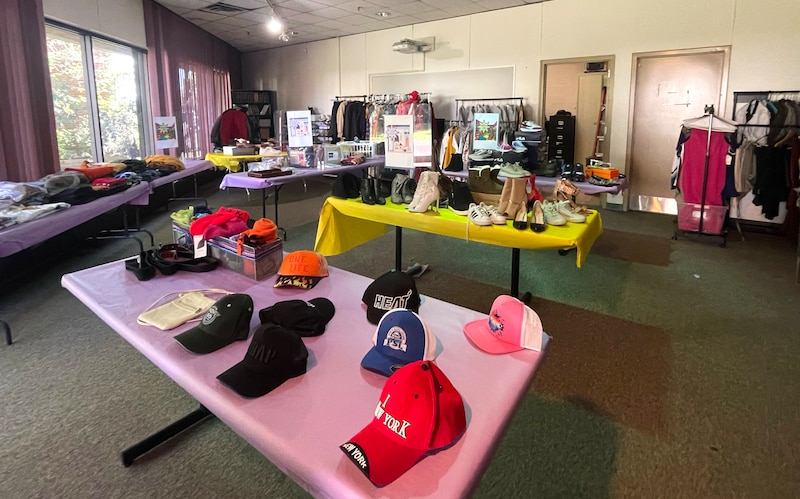
At the school, which requires an application for students to attend, reducing absenteeism is ingrained in the culture.
A poster hanging on a brick wall by the school entrance tracks the daily attendance rate of each grade. Students who miss two days or fewer in the class with the highest attendance each month get rewards like cookies, nachos, or a movie day.
A room on the first floor of the school looks like a clothing boutique, except the clothes “for sale” are all marked “100% free.” Kids can grab the things they need to show up to school, like winter coats, gloves, and new shoes.
In another space, kids can get the hygiene products they need to show up ready to learn. There’s also a washer and dryer in the school where students can clean their clothes.
Davis said there are discussions around creating a parent carpool for kids who live near each other.
‘A form of freedom’
The gift of the bikes was not simply a pragmatic attempt to reduce absenteeism, said Davis. It was an act of love.
“When you’re a teenager, bikes are your first form of transportation, right?” Davis said. “It gives you a form of freedom. You explore the world with your bike.”
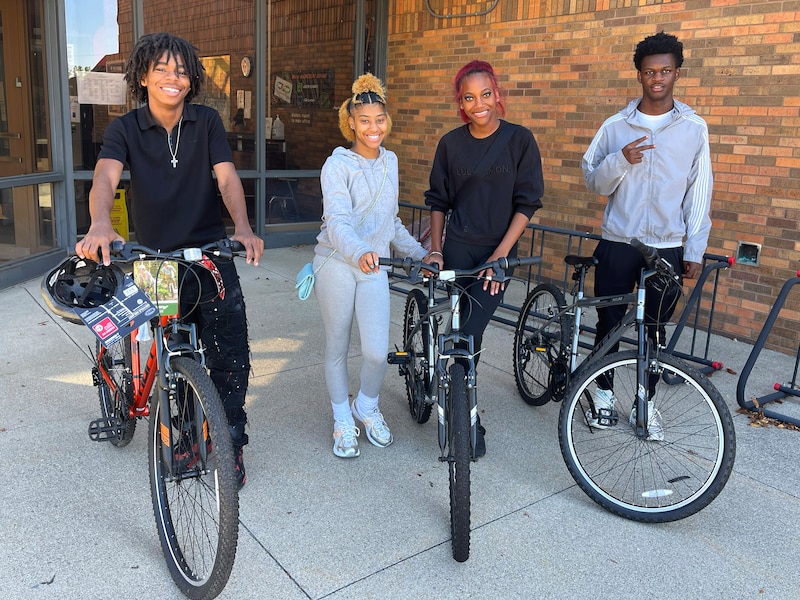
Junior Roderic Pippen said his bike helped him find a new hobby.
“I like to adventure on the bike – find new places to be at,” he said. “My bike trips are more fun than just sitting in the car, scrolling on the internet.”
Holiday will use his bike this year to attend biweekly events by the Midnight Golf Program, a mentorship and college readiness nonprofit.
Before they got bikes, seniors Savannah Robinson and Ciana Carter felt stuck at home during summer breaks because their parents were busy with work.
Last summer, the girls had the freedom to ride to meet up and go to places like the beauty supply store and restaurants.
“Anytime she had a bad day over summer, I’d be like, come on, girl, let’s go ride our bikes and get fresh air,” said Robinson. “So it’s really helpful for both of us.”
Hannah Dellinger covers Detroit schools for Chalkbeat Detroit. You can reach her at hdellinger@chalkbeat.org.

